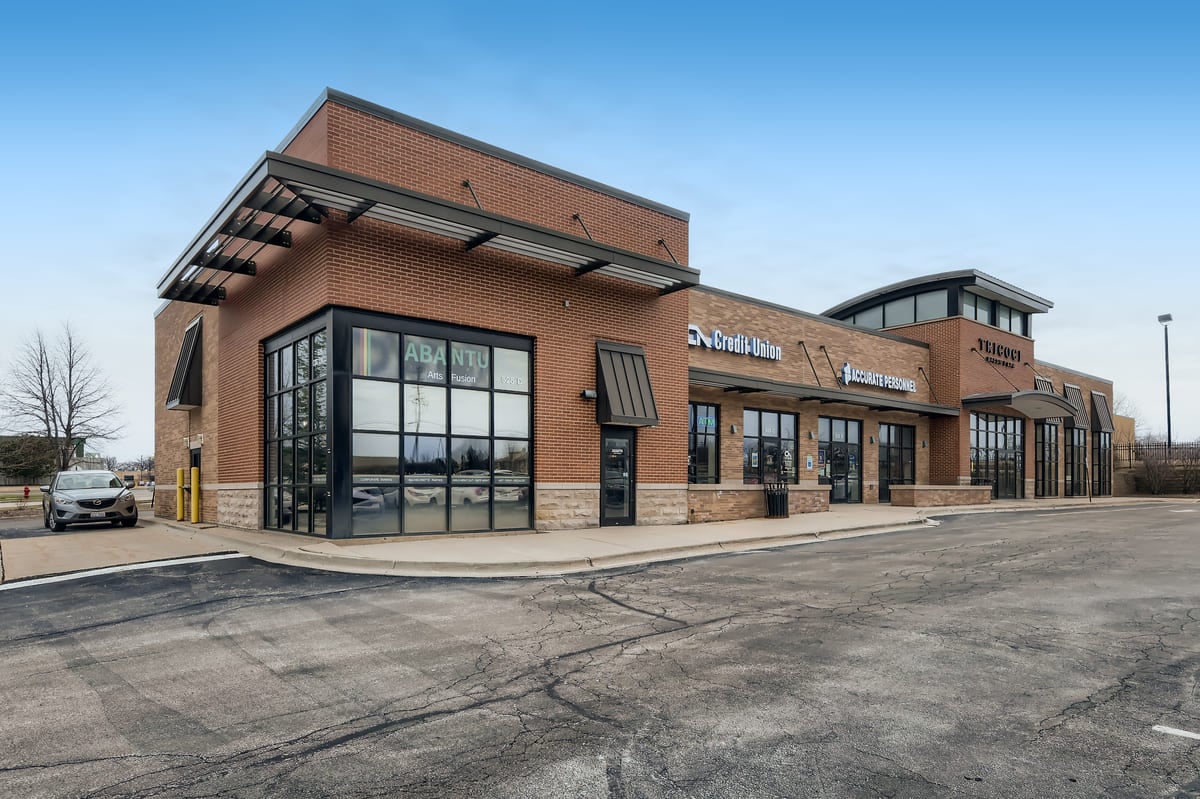
The Chicago commercial real estate market is dynamic, with its sky-piercing structures and vibrant commercial scene.
When making commercial property improvements to enhance property appeal and tenant satisfaction, the question arises: is it possible to have too much rehab?
This article from our team at Brian Properties discusses commercial property upgrades, examining its benefits, potential drawbacks, and the overarching impact on Chicago's commercial real estate landscape.
The Risks and Challenges of Property Upgrades
Commercial real estate rehab projects can be a valuable investment strategy. Real estate rehab investments can come with risks, so be aware of them before committing.
Understanding these challenges can help you make more informed decisions and mitigate potential pitfalls.
The Dangers of Spending Too Much on Rehab
When embarking on a rental property renovation, it’s easy to get carried away with high-end finishes or extensive upgrades that may not yield the expected return. Spending too much on renovations can reduce profits when selling or leasing the property.
An example is installing luxury amenities in an area where tenants might prioritize affordability over such extras. You could invest money that you won't recoup in rent increases.
Create a thorough budget and adhere to it as much as possible. A well-planned contract outlining all costs upfront can help prevent unexpected expenses.
The Risks Associated With Excessive Improvements
Making improvements beyond the standard for your market segment is known as over-improvement. This occurs when owners invest significantly more into their properties than comparable assets nearby but need to see proportional returns due to local market conditions.
One scenario would be adding high-cost features like professional-grade appliances in rental units in modest neighborhoods where renters are unlikely willing—or able—to pay premium rents for those additions.
This doesn’t mean that you shouldn’t make any improvements, but they should be consistent with the standard for your area and type of property. Research the local market and understand tenant expectations before committing to significant upgrades.
Understanding these risks will allow you to plan effectively and maximize returns on your commercial real estate rehab projects. It's all about finding the right balance between spending wisely on necessary improvements that add value, without overdoing it or investing in areas that won't yield an adequate return).
It's a Balancing Act
Navigating the tricky terrain between expenditure and gain is indispensable to rehabbing business real estate.
Some criteria and techniques can help you make the right decision for cost versus benefit in commercial real estate rehab.
Assessment Tools
The first step in any successful rehab project is a thorough rental property assessment. This includes an evaluation of its current condition, potential improvement areas, and how these changes could affect overall value.
A detailed inspection by a professional building inspector or engineer can provide valuable insights into structural issues that may not be visible to the naked eye.
You may want to employ a valuer familiar with rehab projects to understand which improvements can enhance the worth of your real estate.
To complement this analysis, using advanced software like Procore’s Rehab & Remodeling Software allows you to track costs effectively throughout the entire process — from pre-construction estimates to final punch lists. It gives comprehensive data at every stage, ensuring informed decisions about which renovations offer maximum ROI.
Decision-Making Criteria
Moving forward with any commercial real estate (CRE) rehab project should hinge on several factors: potential return on investment (ROI), tenant needs/demands, market trends, sustainability goals, etc.
These criteria collectively help establish if pursuing a specific upgrade is financially and strategically worth it.
- Potential ROI: Analyzing projected revenue growth against anticipated expenses helps decide whether you should proceed with renovation plans.
- Tenant Needs/Demands: Understanding your tenants' needs is essential. If the proposed changes enhance their experience and meet demands, it's more likely they'll stay long-term, reducing vacancy rates.
- Market Trends: Keep an eye on current trends in commercial real estate rehab. For instance, there’s a growing interest in sustainable building practices that might influence your decision-making process.
- Sustainability Goals: Aside from market trends, consider implementing sustainable improvements if it means a more energy-efficient building or reduced long-term maintenance costs. The added value of sustainability can boost the overall ROI.
Most importantly, for success, it's necessary to match any renovation work with the strategic goals of your rental property portfolio. This could encompass a variety of aspects.
 Future Trends in Tenant Preferences
Future Trends in Tenant Preferences
As the world of commercial real estate continues to evolve, two trends are emerging: sustainable rehab and technology integration.
These developments aren't just fleeting fads; they're shaping the future of property maintenance.
Sustainable Rehab
More owners and tenants alike now prioritize green practices in their properties. It's not only about being eco-friendly but also because it can save costs over time.
For example, using energy-efficient materials or installing solar panels can significantly reduce utility bills.
Green rehabilitation isn't limited to energy efficiency alone. Sustainable water management systems like rainwater harvesting or greywater recycling are becoming more common. This trend toward sustainability shows a commitment towards responsible ownership that tenants appreciate while reducing long-term operating expenses.
Tech Integration
The other significant shift we're seeing is the growing use of technology in property maintenance and rehab projects. New tools let us automate processes that used to be manual, making work more efficient.
Digital platforms make it easier for landlords and managers to track repair requests, schedule routine maintenance tasks, and communicate with tenants efficiently — all leading to better tenant satisfaction rates.
These future trends are worth paying attention to because they can give properties a competitive edge. Sustainable rehab attracts eco-conscious tenants and helps reduce operational costs over time.
Tech integration makes maintenance tasks easier to manage and improves tenant communication, ultimately leading to better retention rates.
At Brian Properties, we're always ready and ahead of the curve. We diligently work on commercial real estate acquisition, leasing management, and sales while keeping a keen eye on emerging trends.
The Stakeholders' Perspectives
The perspectives of key stakeholders like owners and tenants can make a big difference in property maintenance.
Let's explore these perspectives further.
Owners’ Viewpoint: Insights on Owners’ Expectations and Concerns
As a property owner, keeping your commercial properties in top shape is critical. It helps attract quality tenants and maintain the value of your investment over time.
However, it's not just about aesthetics; functional upgrades play an equally important role.
For instance, regular upkeep, like painting or replacing worn-out fixtures, can help keep your property looking fresh and appealing. However, substantial improvements such as upgrading heating systems or adding energy-efficient features may be necessary to meet changing tenant demands or comply with evolving building codes.
It's also crucial for owners to stay informed about market trends like this one so they know what potential renters want in their commercial spaces.
Tenants’ Expectations: How Tenants Perceive And Value Rehab Efforts
Tenants expect more than just a roof over their heads when they lease commercial space today; they want places that cater to their specific needs while promoting comfort, productivity, and safety.
The use of smart technology is increasingly becoming a must-have feature rather than an optional extra-think automated lighting systems or high-speed internet connections for seamless work experiences.
Green initiatives like energy-efficient appliances and water-saving fixtures are not just good for the environment but can also help tenants save on utility costs, making your property more attractive to them.
In addition, how you handle maintenance issues is equally important. Quick responses to repair requests and regular preventative maintenance checks can make a tenant feel valued and cared for, enhancing their overall leasing experience with your property management company.
For instance, our team at Brian Properties works tirelessly to go beyond what our tenants expect. We do this by making sure that our properties are always in top shape, addressing maintenance issues promptly, and providing convenient digital property management tools to make their leasing experience seamless.
 Navigate Commercial Real Estate Strategies With Commercial Property Management
Navigate Commercial Real Estate Strategies With Commercial Property Management
With a measured and informed approach, commercial property rehab can be a rewarding investment. It's about striking the right balance — making improvements that add value without overspending or over-improving.
As property owners and managers, staying aware of future trends and perspectives can ensure we meet our tenants' evolving needs, maintain our properties' market competitiveness, and ultimately, protect and grow our investments.
At Brian Properties, we help navigate commercial real estate and provide commercial property management encompassing property maintenance services and advice for property upgrades based on consumer trends and the real estate market.
We offer a comprehensive range of services designed to help property owners maximize their return on investment while minimizing risk.
If you're interested in partnering with our team, contact us today!
Similar Posts
Oct
Chicago Commercial Real Estate Brokers and Property Maintenance
Owning and managing Chicago commercial real estateinvolves extensive responsibilities and obligations. Some of the most significant responsibilities...
Mar
10 Chicago Commercial Real Estate Investing Considerations
When it comes to commercial real estate (CRE) investment, thorough research is critical. From selecting the right property type to structuring deals,...
Jul
What to Expect as a Chicago Commercial Real Estate Owner
What should you expect when owning and managing commercial properties? The short answer is: there's a lot.
From dealing with commercial property...



